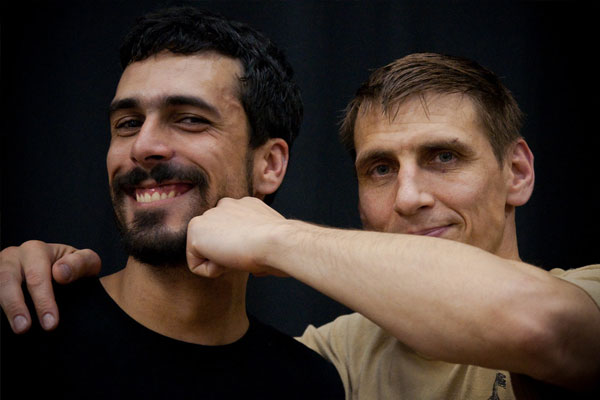Martial Arts Near Me
Systema
Systema, the ancient Russian martial art, has a rich history that dates back centuries. Known for its fluidity, practicality, and focus on natural movement, Systema has survived the test of time and continues to gain recognition worldwide. In this exploration, we delve into the history, techniques, and current status of Systema, offering an in-depth look at this fascinating martial art.
Originating in Russia, Systema has deep roots in the country's historical and cultural development. Its beginnings can be traced back to the tenth century, stemming from the ancient Slavic fighting style known as "Ruska Borba." Originally developed for combat on the battlefield, it evolved into a comprehensive system encompassing not only unarmed combat but also weapon handling, strategy, and personal development.
Throughout the centuries, Systema stayed closely tied to the Russian military, training soldiers in hand-to-hand combat. However, it was only in the late 20th century that Systema started to gain wider recognition as a practical martial art system for civilians. This shift can primarily be attributed to the efforts of Mikhail Ryabko and his student, Vladimir Vasiliev.

Ryabko, a former Russian Special Forces operative, played a pivotal role in modernizing Systema and spreading its teachings beyond military circles. His approach focused on adaptability, utilizing principles of fluid movement and relaxation to enable practitioners to respond effectively to any situation. With Ryabko's guidance, Systema began to attract students from around the world seeking to study this unique martial art.
Among the defining characteristics of Systema is the absence of rigid techniques or predetermined patterns. Systema emphasizes the development of natural movement, allowing practitioners to adjust and adapt in real-time. Instead of adhering to rigid forms, Systema teaches students to harness their innate instincts and intuition. By cultivating a deep understanding of movement and body mechanics, practitioners acquire the ability to neutralize threats and protect themselves efficiently.
Breathing exercises play a vital role in Systema, serving to enhance physical and mental control. This emphasis on breath is reminiscent of ancient Eastern practices and allows practitioners to regulate their body's response to stress, maintaining calmness and focus even in high-pressure situations. Mastery of breath control helps practitioners develop a deep internal strength that aids in both offense and defense.
Moreover, Systema integrates a range of striking, grappling, and ground-fighting techniques. Unlike other martial arts, Systema discourages strict adherence to specific techniques, instead relying on principles of fluidity and improvisation. Joint locks, throws, strikes, and ground-fighting are all part of the practitioner's toolset, allowing them to adapt to any confrontation dynamically.
The impact of Systema has expanded beyond the realm of martial arts. Its focus on relaxation, breath control, and mental clarity has attracted practitioners seeking personal growth and self-improvement. By practicing Systema, individuals learn not only to defend themselves but also to develop resilience, emotional control, and a deep understanding of their own bodies. Systema's holistic approach has found applications in stress management, conflict resolution, and personal development, making it a diverse and valuable practice for individuals from all walks of life.
Today, Systema continues to evolve and gain international recognition. Its principles and techniques have been adopted by law enforcement and military units around the world due to its practicality and adaptability. Numerous Systema schools and training centers have emerged globally, serving as valuable resources for individuals seeking to learn this martial art.
Systema's history, techniques, and current status demonstrate its enduring appeal and relevance. From its origins as a warrior art in ancient Russia to its modern-day global recognition, Systema has become known as a practical martial art that emphasizes natural movement, intuition, and breath control. Its absence of rigid techniques and its focus on improvisation allow practitioners to adapt effortlessly to any situation. As Systema continues to evolve and spread worldwide, it remains a living testament to the power of fluidity, adaptability, and personal growth.